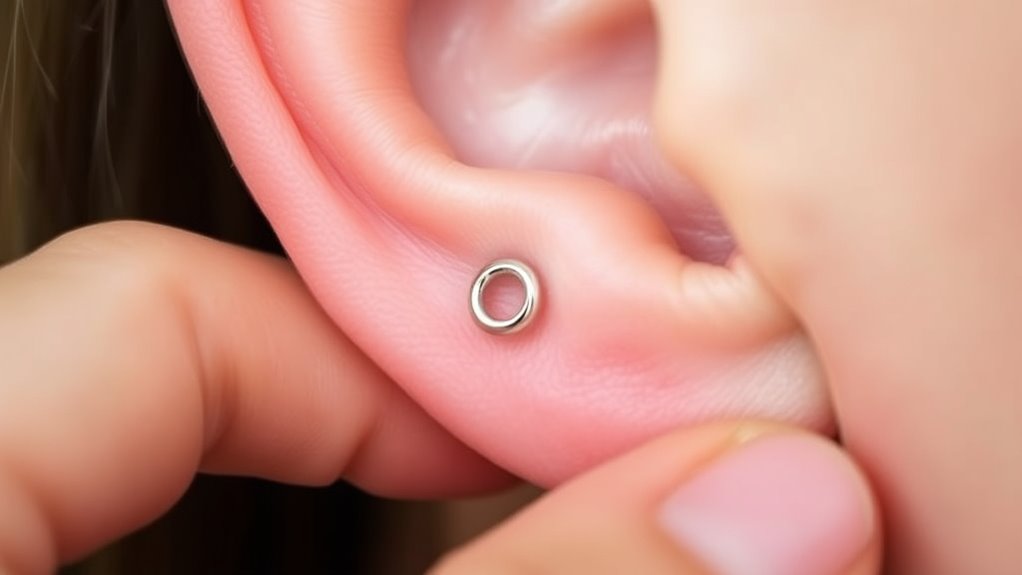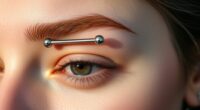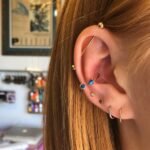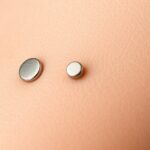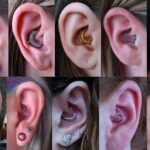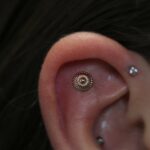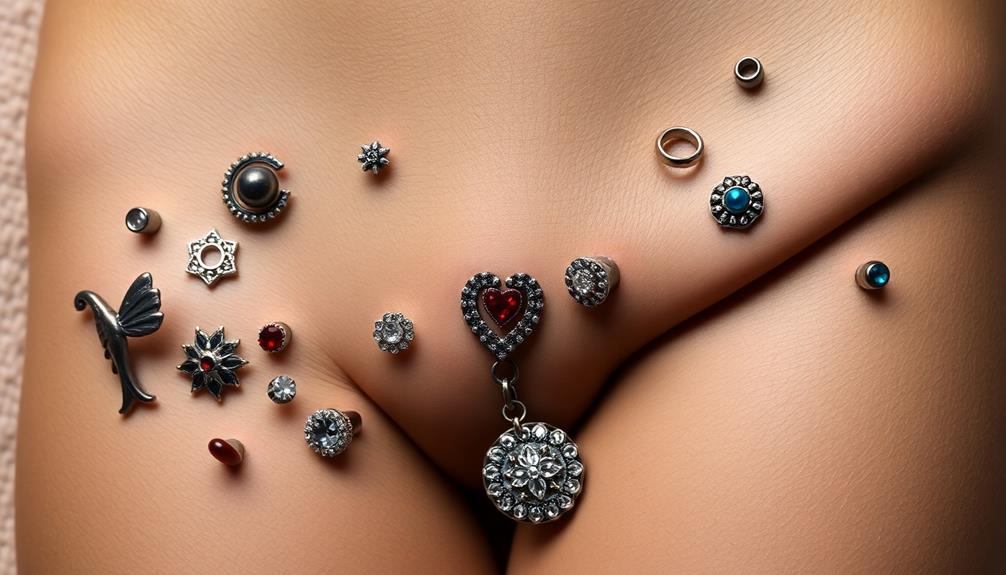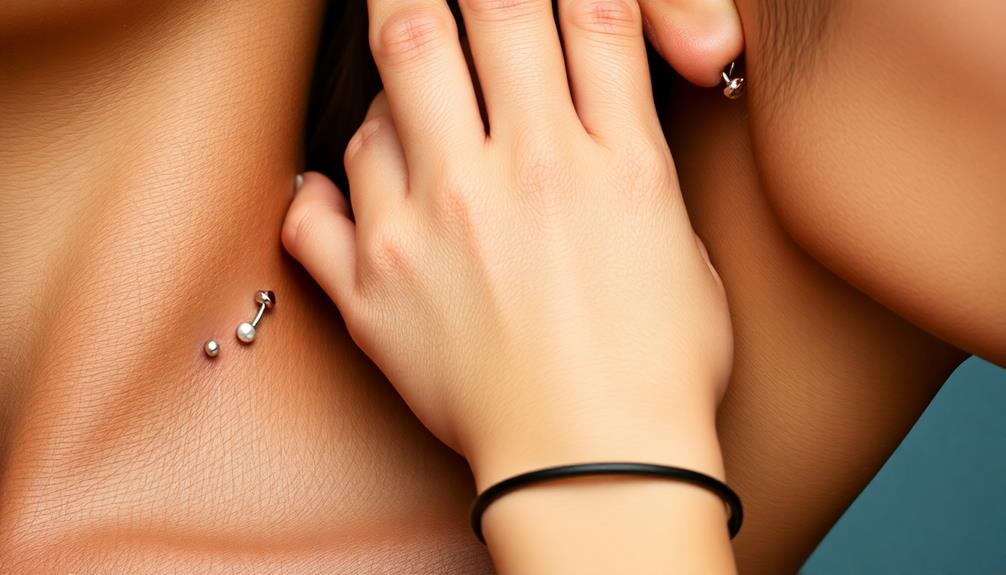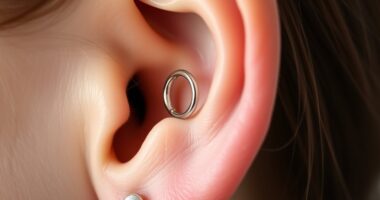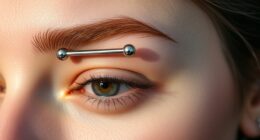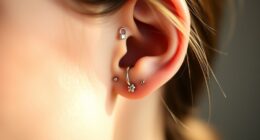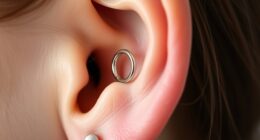A daith piercing involves a small needle creating an opening through the thick cartilage fold in your ear’s inner conch, usually done with a sterile tool by a professional piercer. The procedure typically takes just a few minutes and is generally minimally painful, though some discomfort is normal. Healing can take 6 to 8 weeks, requiring proper aftercare to prevent infections. If you want to know more about the process and tips, keep exploring these details.
Key Takeaways
- The daith piercing involves puncturing the cartilage fold above the ear’s ear canal with a sterilized needle.
- Healing typically takes 6 to 8 weeks, requiring proper hygiene and avoiding irritants like pools or lakes.
- Use hypoallergenic jewelry, such as surgical steel or titanium, to minimize allergic reactions during healing.
- After full healing, various jewelry styles like hoops or clickers can be chosen for aesthetic preferences.
- Follow aftercare guidelines diligently and consult a professional if signs of infection or complications occur.
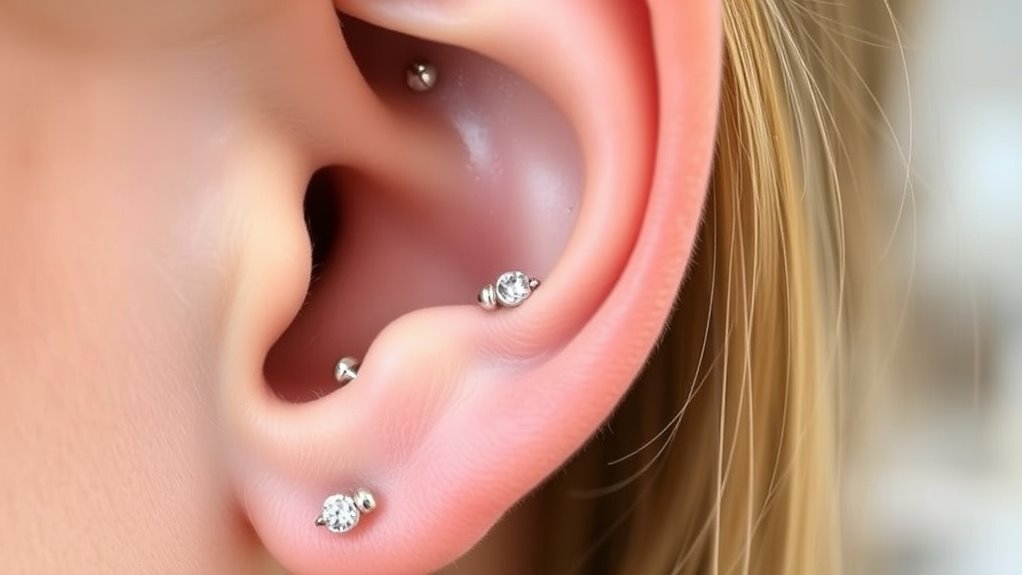
Daith piercings are a popular choice for those looking to add a unique touch to their jewelry collection. If you’re considering getting one, it’s helpful to understand what the healing process involves and the various jewelry options available. The healing process typically takes about 6 to 8 weeks, but it can vary depending on your body’s response and how well you care for the piercing. During this time, you might experience some swelling, tenderness, or minor discomfort, which are normal parts of healing. To ensure proper healing, you’ll need to keep the area clean, avoid touching it unnecessarily, and steer clear of irritating products like alcohol or hydrogen peroxide. You should also avoid swimming in pools or lakes during the initial healing phase to prevent infection.
When it comes to jewelry options, there’s a wide range of styles suited for a daith piercing. Initially, your piercer will likely recommend a starter jewelry piece, such as a straight or curved barbell made of hypoallergenic material like surgical stainless steel, titanium, or niobium. These materials reduce the risk of allergic reactions and make cleaning easier. Once fully healed, you can explore different jewelry styles to match your aesthetic — from elegant captive bead rings to more decorative hoops or clickers. Some people prefer lightweight jewelry for comfort, while others opt for more ornate designs to make a statement. The versatility of jewelry options allows you to personalize your daith piercing, whether you’re going for a subtle look or something bold and eye-catching.
During the healing process, it’s essential to be patient and attentive to your body’s signals. If you notice increased redness, swelling, or discharge, it could be a sign of infection, and you should consult a professional piercer or healthcare provider. Proper aftercare, including gentle cleaning with saline solution and avoiding sleeping on the side of the piercing, can help prevent complications. Additionally, choosing jewelry made from hypoallergenic materials can significantly reduce the risk of allergic reactions and irritation. Over time, as the piercing heals, you might decide to change your jewelry to different styles or materials, but always wait until the piercing is fully healed before making any swaps. Remember, a daith piercing can be a striking addition to your jewelry collection, but it requires care and patience to ensure it heals well and remains beautiful.
Frequently Asked Questions
How Long Does a Daith Piercing Typically Take to Heal Completely?
A daith piercing usually takes about 6 to 9 months to heal completely. The healing timeline varies depending on factors like your body’s healing ability, aftercare, and whether you experience any infections or irritation. To promote faster healing, follow your piercer’s aftercare instructions, avoid touching or twisting the jewelry, and keep the area clean. Patience is key, and proper care assists in ensuring a smooth healing process.
Are There Any Specific Aftercare Products Recommended for Daith Piercings?
For your daith piercing, you should choose gentle, effective piercing aftercare products like saline sprays or solutions to soothe and sanitize. Look for jewelry material considerations—preferably hypoallergenic options like surgical steel or titanium to prevent irritation. Avoid harsh chemicals or alcohol-based products, which can hinder healing. Consistently clean and care for your piercing with these recommended products, ensuring a smooth, swift, and safe healing process.
Can a Daith Piercing Be Safely Done With Cartilage Allergies?
If you have a cartilage allergy, it’s best to consult with a professional piercer before getting a daith piercing. They can recommend materials like hypoallergenic surgical steel or titanium, which are safer options. A safe piercing diminishes the risk of allergic reactions, so informing your piercer about your allergy ensures they take proper precautions. Ultimately, with the right materials and expert care, a daith piercing can be safely done even with cartilage allergies.
What Are the Signs of Infection to Watch for After Piercing?
Keep an eye on your piercing like a vigilant guardian. Signs of infection include persistent redness, swelling, or warmth that won’t fade, and pain that feels like a constant throb. If you notice yellow or green discharge, it’s a red flag. These signs infection mean your body’s fighting off unwelcome invaders. Acting quickly by cleaning the area and consulting a professional can help prevent complications and keep your piercing healthy.
Is There Any Risk of Nerve Damage With Daith Piercings?
You might experience some nerve sensitivity with daith piercings, but significant nerve damage is rare. To mitigate risks, choose an experienced piercer who uses proper techniques. If you notice persistent pain or numbness, it could be a sign of nerve issues, so seek pain management advice promptly. Most nerve damage risks are low, but staying alert to unusual sensations helps ensure safe healing.
Conclusion
Now that you know the ins and outs of daith piercings, you’re ready to decide if this bold choice is for you. Remember, a daith piercing isn’t just a trend—it’s a statement that can transform your look and boost your confidence. With proper care, your piercing can stay stunning for years. So go ahead, take the plunge—this tiny jewelry piece has the power to make your style explode like a fireworks show!
Piecing together a life one day at a time, that’s me. I’m Rusty, and I love being editor-in-chief of creative piercing. It’s my passion to help others see their vision and bring it to life. When I’m not working or taking care of my family, you can find me reading a good book or eating pie (of course!).

